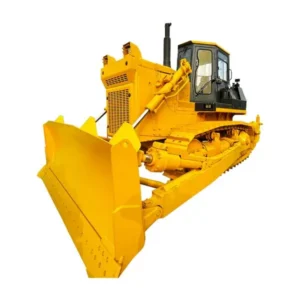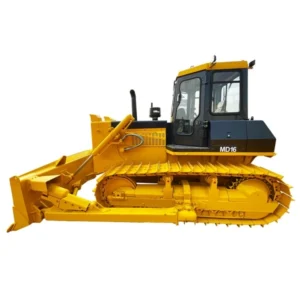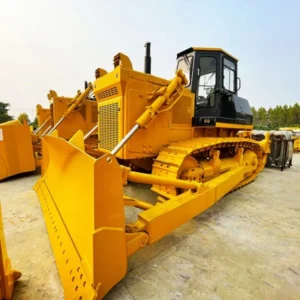Introdução

Operating a dozer, also known as a bulldozer, can be a daunting task for beginners. These powerful machines are essential in construction, landscaping, and various other industries, making it crucial to understand their proper operation. This comprehensive guide will walk you through the basics of how to run a dozer, covering essential techniques, safety precautions, and practical tips. By the end of this guide, you will have a solid foundation to operate a dozer confidently and efficiently.
Understanding the Basics of How to Run a Dozer
What is a Dozer?
A dozer is a heavy-duty machine equipped with a large metal blade at the front, used for pushing and leveling materials such as soil, sand, rubble, and snow. Dozers are widely used in construction, agriculture, mining, and other industries that require earth-moving capabilities.
Components of a Dozer
Familiarizing yourself with the main components of a dozer is the first step in learning how to run a dozer. Key components include:
- Motor: Provides the power needed for operation.
- Lâmina: The large metal plate used for pushing materials.
- Tracks: Provide stability and traction.
- Cab: The operator’s compartment, equipped with controls.
- Estripador: An optional attachment used for breaking up hard ground.
Types of Dozers
There are several types of dozers, each designed for specific tasks. Common types include:
- Crawler Dozers: Equipped with tracks, ideal for rough terrain.
- Tratores de rodas: Equipped with wheels, suitable for soft or sensitive ground.
- Mini Dozers: Smaller versions of crawler dozers, used in confined spaces.
Getting Started: How to Run a Dozer
Pre-Operation Checklist
Before starting the dozer, perform a thorough pre-operation inspection to ensure everything is in working order. This checklist should include:
- Checking fluid levels: Oil, coolant, and hydraulic fluid.
- Inspecting tracks or tires: Look for wear and damage.
- Ensuring the blade is secure: Check for any loose parts.
- Testing controls: Make sure all levers and pedals function properly.
Starting the Dozer
- Enter the Cab: Use the handrails and steps to safely enter the cab.
- Fasten Your Seatbelt: Safety first.
- Ignition: Insert the key and turn it to start the engine. Allow the engine to warm up.
- Control Familiarization: Identify the main controls: steering levers, throttle, blade control lever, and ripper control (if applicable).
Basic Maneuvers
Learning basic maneuvers is essential for beginners. These include moving forward and backward, turning, and operating the blade.
Moving Forward and Backward
- Throttle Control: Adjust the throttle to increase or decrease engine speed.
- Transmission: Engage the forward or reverse gear using the transmission lever.
- Steering Levers: Use the left and right steering levers to control direction.
Turning
- Steering Levers: Push the left lever forward to turn right and the right lever forward to turn left.
- Gradual Movements: Make gradual adjustments to avoid abrupt turns.
Operating the Blade
- Blade Control Lever: Use this lever to raise, lower, tilt, and angle the blade.
- Precision Movements: Practice making precise adjustments for tasks like grading and leveling.
Advanced Techniques for Running a Dozer
Classificação e nivelamento
Grading and leveling are common tasks for dozer operators. Follow these steps to achieve a smooth surface:
- Set the Blade: Lower the blade to the desired height.
- Forward Movement: Move the dozer forward, keeping a steady pace.
- Blade Adjustments: Make small adjustments to maintain an even grade.
- Overlap Passes: Overlap each pass slightly to ensure a uniform surface.
Slope Work
Working on slopes requires additional skill and caution. Here’s how to handle slopes safely:
- Approach Angle: Always approach a slope straight on, not at an angle.
- Blade Position: Keep the blade low to the ground for stability.
- Speed Control: Use low speeds to maintain control.
- Avoid Side Slopes: Whenever possible, avoid working on side slopes to prevent tipping.
Using Attachments
Dozers can be equipped with various attachments, such as rippers, winches, and brush cutters. Learning to use these attachments expands the versatility of the dozer.
Estripador
- Engage the Ripper: Lower the ripper to the ground.
- Apply Pressure: Gradually apply pressure to break up hard ground.
- Control Speed: Move slowly to allow the ripper to penetrate the surface.
Guincho
- Attach the Winch: Secure the winch cable to the load.
- Engage the Winch: Use the control lever to reel in or release the cable.
- Monitor Tension: Ensure the cable tension is even to avoid snapping.
Safety Tips for Running a Dozer

Personal Safety Gear
Always wear appropriate personal protective equipment (PPE), including:
- Hard Hat: Protects your head from falling objects.
- Safety Glasses: Shields your eyes from debris.
- High-Visibility Vest: Ensures you are visible to others on the site.
- Work Boots: Provides foot protection and stability.
Operational Safety
- Clear Communication: Use hand signals or radios to communicate with ground personnel.
- Awareness of Surroundings: Continuously monitor your surroundings for obstacles and other equipment.
- Proper Lighting: Ensure the work area is well-lit, especially during low-light conditions.
Emergency Procedures
Familiarize yourself with emergency procedures, including:
- Emergency Shutdown: Know how to quickly shut down the dozer in case of a malfunction.
- First Aid: Have a basic understanding of first aid and keep a kit on hand.
- Evacuation Plan: Be aware of the site’s evacuation plan in case of emergencies.
Routine Inspections
| Inspection Interval | Inspection Item | Descrição | Status |
|---|---|---|---|
| Diário | Fluid Levels | Check oil, coolant, and hydraulic fluid levels | ✅ / ❌ |
| Tracks | Inspect for wear and damage | ✅ / ❌ | |
| Lâmina | Check for secure attachment and free of damage | ✅ / ❌ | |
| Semanalmente | Sistemas Hidráulicos | Check for leaks and proper function | ✅ / ❌ |
| Electrical Components | Inspect for wear and proper function | ✅ / ❌ | |
| Filters | Check and replace if necessary | ✅ / ❌ | |
| Por mês | Motor | Perform a comprehensive inspection | ✅ / ❌ |
| Transmission Systems | Check for proper function and wear | ✅ / ❌ |
Conclusão
Learning how to run a dozer is a valuable skill that opens up opportunities in various industries. By following this step-by-step guide, beginners can gain the confidence and knowledge needed to operate a dozer safely and efficiently. Remember to prioritize safety, perform regular maintenance, and continuously practice to improve your skills. Whether you are pursuing a career in construction or simply interested in mastering heavy machinery, understanding how to run a dozer is an essential and rewarding endeavor.
Perguntas frequentes
What is the Best Way to Learn How to Run a Dozer?
The best way to learn how to run a dozer is through a combination of formal training and hands-on experience. Enroll in a training program and practice under the supervision of experienced operators.
How Long Does it Take to Become Proficient at Operating a Dozer?
Becoming proficient at operating a dozer can take several months of regular practice and experience. The exact time frame depends on the complexity of the tasks and the frequency of operation.
Are There Specific Certifications Required to Operate a Dozer?
In many regions, certification or licensing is required to operate heavy machinery, including dozers. Check local regulations and obtain the necessary certifications through accredited training programs.
What Are the Most Common Mistakes Beginners Make When Learning How to Run a Dozer?
Common mistakes include not performing pre-operation checks, improper use of controls, ignoring safety protocols, and attempting complex maneuvers without sufficient practice.
How Can I Improve My Efficiency When Running a Dozer?
To improve efficiency, focus on mastering basic maneuvers, maintaining a steady pace, making precise blade adjustments, and regularly inspecting and maintaining your equipment.






-150x150.webp)
